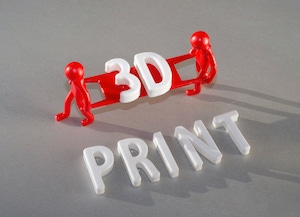“By 2021, 25% of surgeons will practice on 3D-printed models of the patient prior to surgery,” according to a report on 3D printing and additive manufacturing from business research and advisory company Gartner (Stamford, CT).
January 16, 2018

Near the end of last year, PlasticsToday reported on 3D-printing technology companies Stratasys (Minneapolis, MN) and Materialise (Leuven, Belgium) striking deals with medical device OEMs to integrate 3D printing into some of their products. The aim is to provide physicians with a seamless interface to print patient-specific anatomical structures for surgical planning models. Advances in multi-material printing as well as the development of compatible materials, which can replicate soft tissues and hard bones, have made the technology especially attractive to the medical sector. A new report from business research and advisory company Gartner (Stamford, CT) shows just how popular 3D-printed medical models will be in the coming years. “By 2021, 25% of surgeons will practice on 3D-printed models of the patient prior to surgery,” says the report.
3D printing is a major focus at the co-located Medical Design & Manufacturing (MD&M) and PLASTEC West event coming to Anaheim, CA, on Feb. 6 to 8. Explore 3D printing technologies across the show floor and deepen your knowledge through 3D-printing-focused tours, activities, demos and conference sessions during the three-day event. Register now and enter promo code PLASTICSTODAY to receive a 20% discount on conference sessions. |
Because of the improved sophistication of 3D printing, from the integration of medical imaging technology to cloud-based delivery of CAD and modeling software, the technology “will spread from teaching hospitals and specialty centers into the broader hospital system,” predicts Gartner. Right now, only about 3% of hospitals and research institutions have 3D printing capabilities on site, according to the report. But as more 3D printing capabilities come online, Gartner expects increased demand for 3D printing from the medical staff. “3D printing will move from obscure back-office labs into the forefront as part of a strategy to improve surgical training and simulations,” writes Gartner.
The Predicts 2018: 3D Printing and Additive Manufacturing report also analyzes opportunities within the aviation and consumer products sectors. By 2021, says the report, 40% of manufacturing enterprises will establish 3D printing centers of excellence.
The report is available for purchase on the Gartner website.
About the Author(s)
You May Also Like




